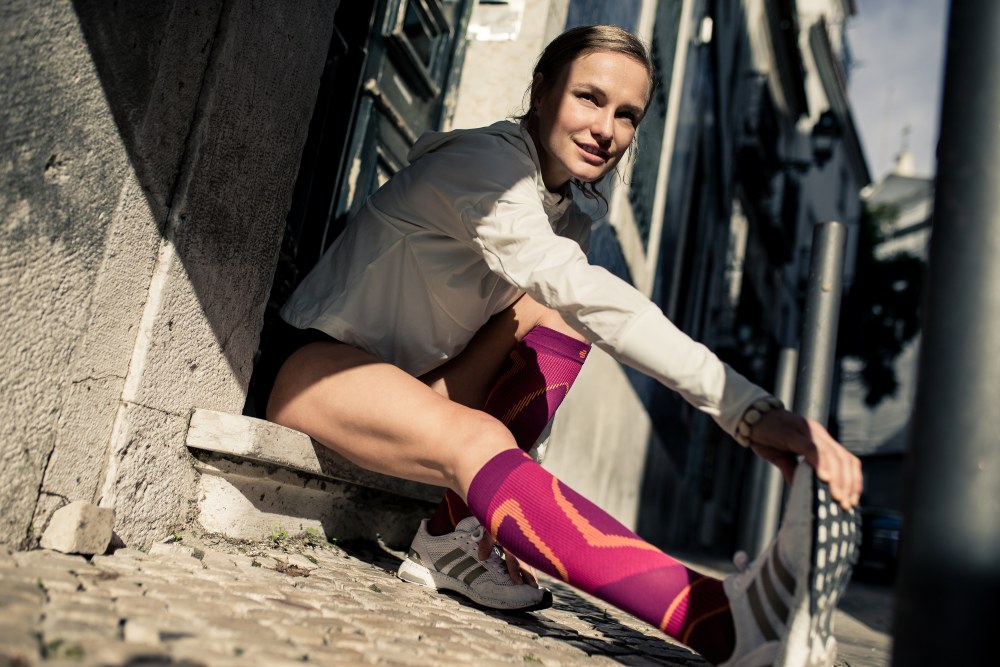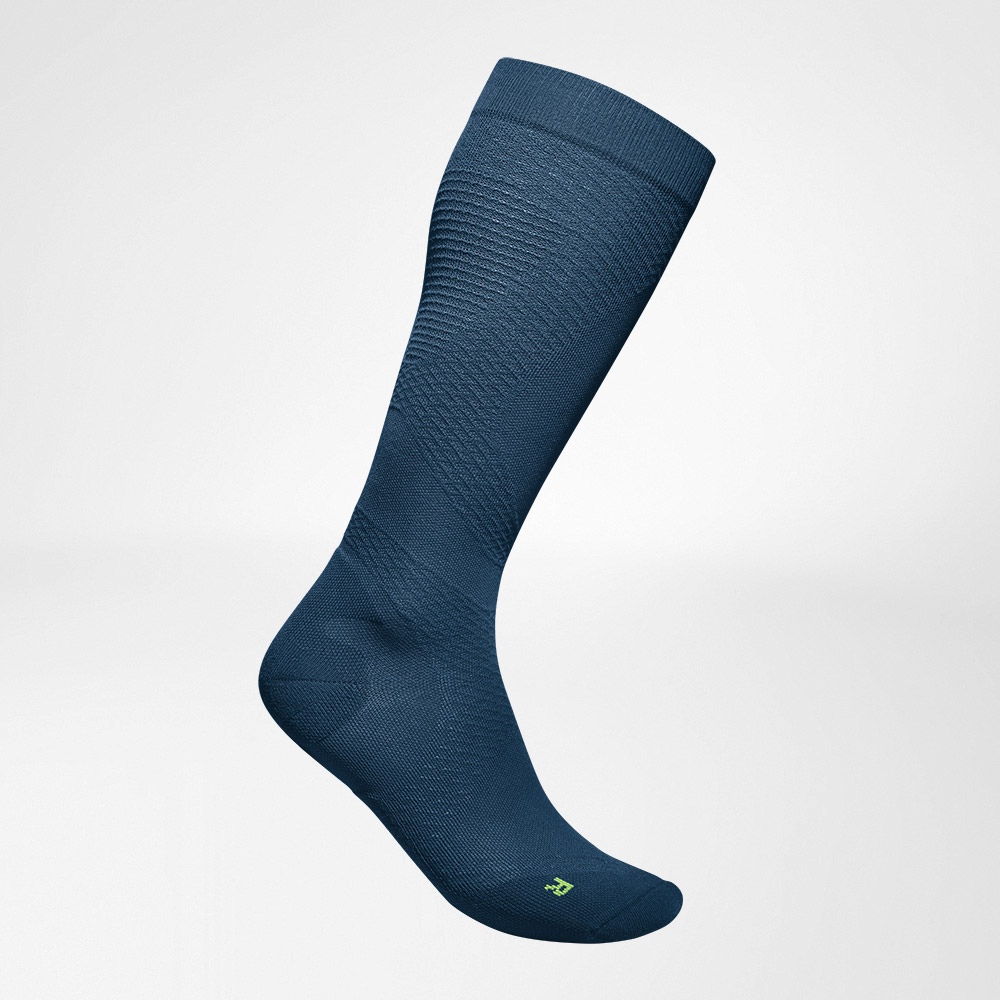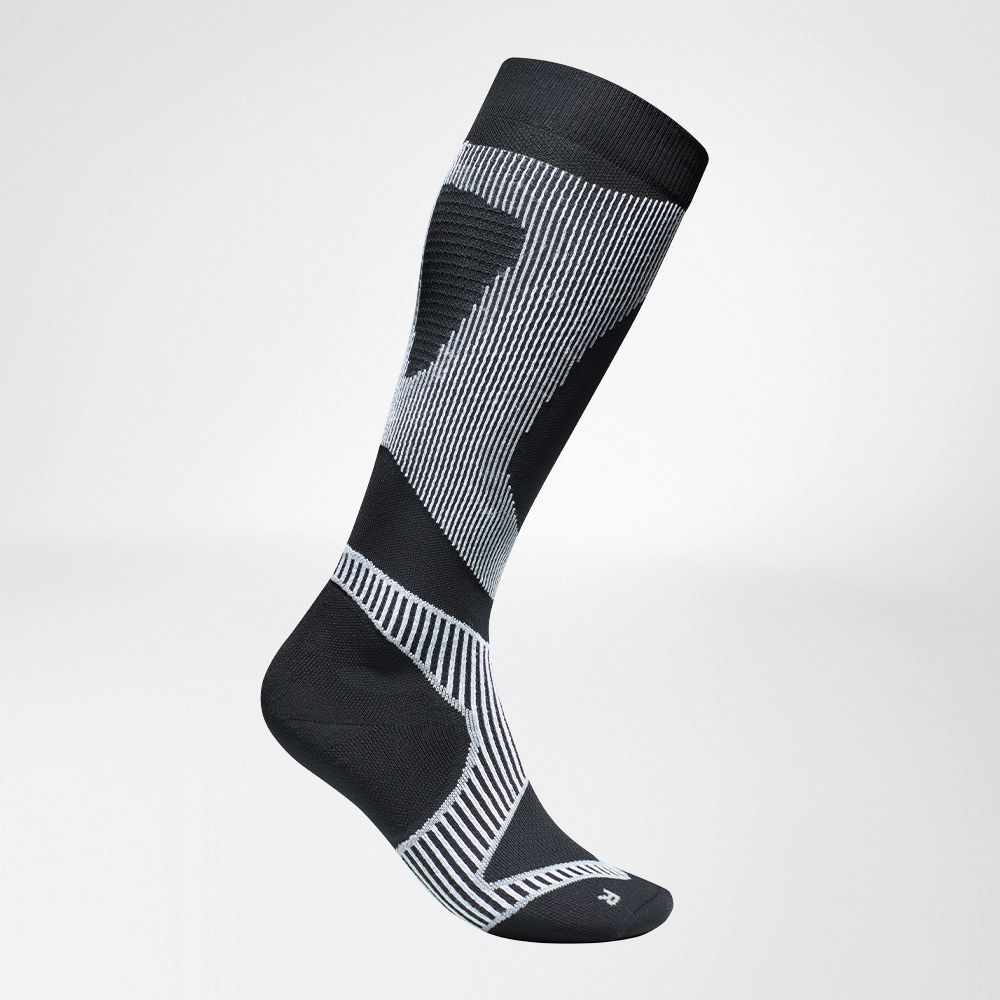
Running
Stretching after Running
Always stay nice and smooth

For many athletes, stretching is not exactly one of their favourite activities. That is why it is often missing on the training plan, especially for hobby runners.
If you belong to this group, but would like to change that, our running experts Anna and Lisa Hahner have some tips for you and tell us about their stretching habits.


Upper calf muscle (Musculus gastrocnemius)
Take a long lunge and lean your arms against a wall or a tree. Both feet point forward. Shift your body weight to the front leg and lower the heel of your back leg to the ground. Stretch your back leg until you feel a stretch in the upper calf muscle.
Lower calf muscle (Musculus soleus)
The exercise is similar to the previous one. Go into a light step position and a very light squatting position. Place the heel of your back leg on the floor and bend your knee until you feel a stretch in your lower calf.
Hamstrings (Musculus ischiocrurale)
Stand up straight. To stretch the back thigh, keep your legs stretched. For example, bend forward with your upper body until your fingertips touch the floor, which should create a significant stretch in your thigh. There are several variations, e.g. stretching with crossed legs and stretching the leg to be stretched forward.
Quadriceps (Musculus quadriceps femoris)
One of the classics par excellence among the stretching exercises! Stand upright and bend your leg backwards. Use your arm to pull it even more towards your bottom. Important: embrace the ankle and not the foot!
Hip flexor (Musculus iliopsoas)
Take an extra large lunge, where your front leg forms a 90° angle between your calf and thigh, while the back of your foot of your back leg rests on the floor. Breathe in and out deeply and stretch a little more with each exhalation.
Gluteal muscle (Musculus piriformis)
Stand up straight. Place your lower leg on the thigh of the supporting leg. Bend your leg so that your knee points outwards. Make a slight bend to apply gentle pressure to your knee to stretch the gluteal muscle. When done correctly, your posture here resembles a "4". The exercise resembles the "dove" in yoga - one of the favourite exercises of the Hahner twins.








